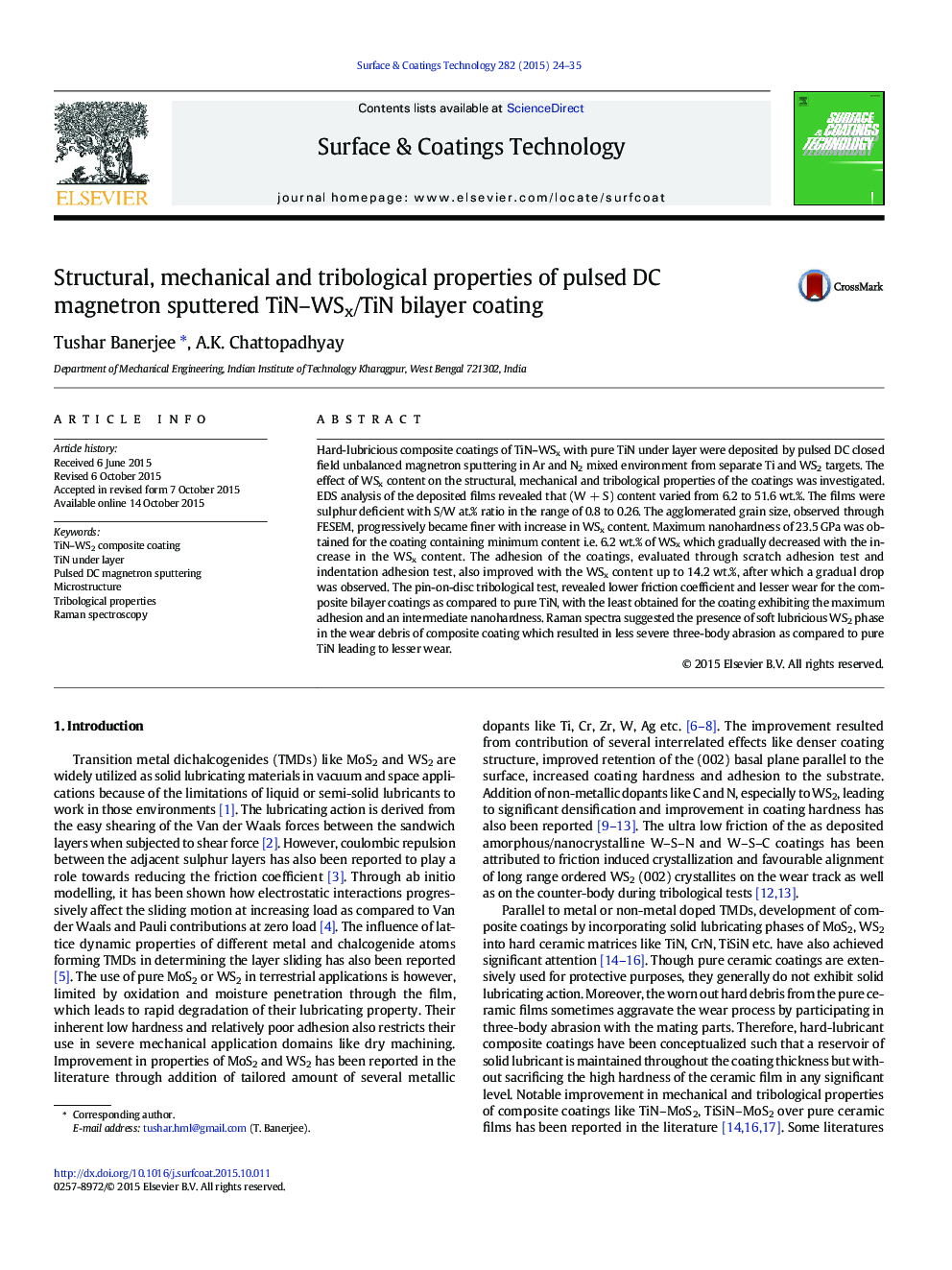| کد مقاله | کد نشریه | سال انتشار | مقاله انگلیسی | نسخه تمام متن |
|---|---|---|---|---|
| 1656729 | 1517597 | 2015 | 12 صفحه PDF | دانلود رایگان |

• TiN–WSx/TiN bilayer coating was obtained through pulsed magnetron sputtering.
• The bilayer coating showed critical load of 68 N as compared to 53 N for TiN.
• The nanohardness initially increased followed by reduction on addition of WSx to TiN.
• Friction coefficient and wear were notably lesser for bilayer coating than TiN.
• Raman spectra suggested the presence of WS2 in the wear debris of bilayer coating.
Hard-lubricious composite coatings of TiN–WSx with pure TiN under layer were deposited by pulsed DC closed field unbalanced magnetron sputtering in Ar and N2 mixed environment from separate Ti and WS2 targets. The effect of WSx content on the structural, mechanical and tribological properties of the coatings was investigated. EDS analysis of the deposited films revealed that (W + S) content varied from 6.2 to 51.6 wt.%. The films were sulphur deficient with S/W at.% ratio in the range of 0.8 to 0.26. The agglomerated grain size, observed through FESEM, progressively became finer with increase in WSx content. Maximum nanohardness of 23.5 GPa was obtained for the coating containing minimum content i.e. 6.2 wt.% of WSx which gradually decreased with the increase in the WSx content. The adhesion of the coatings, evaluated through scratch adhesion test and indentation adhesion test, also improved with the WSx content up to 14.2 wt.%, after which a gradual drop was observed. The pin-on-disc tribological test, revealed lower friction coefficient and lesser wear for the composite bilayer coatings as compared to pure TiN, with the least obtained for the coating exhibiting the maximum adhesion and an intermediate nanohardness. Raman spectra suggested the presence of soft lubricious WS2 phase in the wear debris of composite coating which resulted in less severe three-body abrasion as compared to pure TiN leading to lesser wear.
Journal: Surface and Coatings Technology - Volume 282, 25 November 2015, Pages 24–35